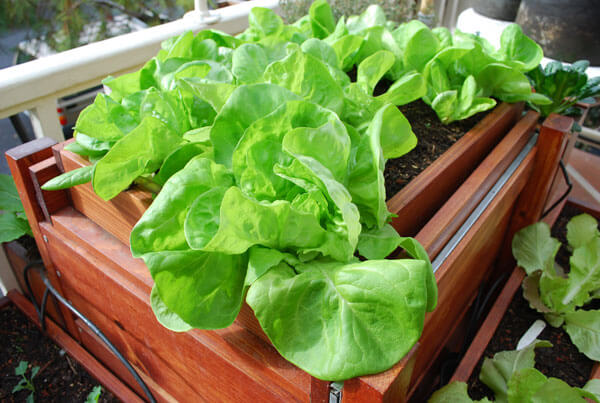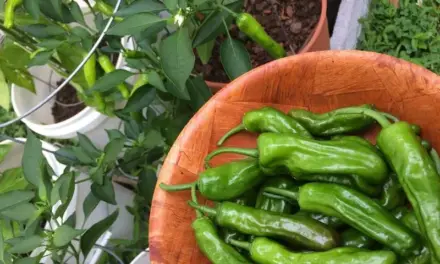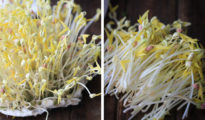Growing lettuce indoors is not hard at all – in fact, it's one of the few vegetables you can grow indoors with ease!
There is nothing more satisfying than growing your own fruits and veggies, but unfortunately, during the winter months, that's not always possible. Thankfully, there ARE some veggies that you can successfully grow indoors for an amazing winter harvest! Today we'll show you how to grow lettuce indoors so that all year round you can enjoy the awesome benefits of this leafy green!
Even if you don't live in a warm climate, it CAN be possible to enjoy fresh, crisp lettuce all year long.
Growing Lettuce Indoors – A DIY Gardening Guide

Before you go ahead and start planting, it's important to choose the right variety of lettuce. Because you'll be growing indoors, you'll need to choose a smaller lettuce variety, also known as baby lettuce. Varieties such as butterhead and loose-leaf lettuce are great for growing in containers and indoors.
They mature much faster than regular lettuce varieties and don't take up as much room. The baby lettuce varieties should mature within 40-45 days. You can find these lettuce varieties at your local nursery or online.
Selecting a Location:
For best results, select a location where your lettuce plant will receive at least 12 hours of bright light every day. This will usually be a south-facing window. If you don't have a location that receives that much light, grow your lettuce under grow lights. You can purchase these at your local hardware store. Also be sure to keep your lettuce plant away from drafts and/or heat vents.
Growing Medium & Lettuce Seeds:
- Choose a pot with good drainage holes so that excess water has a way to get out.
- The pot should be at least 4 inches in height as baby lettuce has long roots.
- Use a sterilized organic seed potting soil for best indoor growing results.
- Make sure to have a spot with lots of sunlight or use grow lights.
- Especially during the early stages, it's important to give your baby lettuce plant as much sunlight as possible.
- Choosing seeds is easy, but there are varieties that are actually better suited for indoor gardens. These are usually loose leaf varieties such as Baby Oakleaf, Tom Thumb and Black-Seeded Simpson.
- There are also varieties which prefer dimmer, winter light such as Arctic King, Winter Marvel and Winter Density.
- You can also grow other indoor friendly greens such as arugula and spinach.
Planting Lettuce Seeds Indoors:
- Be sure to moisten the soil before planting, and prepare a pot or a seedling tray by filling it with about 3-4″ of prepared potting soil.
- Plant the lettuce seeds about 1″ deep and place the pot in sunlight or under grow lights.
- Cover the seeds with a very light layer of soil.
- To encourage quicker germination, place the tray or pot in a warm, sunny area and cover with plastic wrap.
- Once lettuce sprouts appear, remove the plastic wrap and thin the seedlings so they are about 1 inch apart.
- Keep the seedlings moist but not water logged.
- Fertilize your lettuce with nitrogen and trace minerals for fast growth. Liquid kelp fertilizer, worm castings, or compost tea also work great!
Lettuce Plant Care:
- Fertilize your lettuce with nitrogen and trace minerals for fast growth. Liquid kelp fertilizer, worm castings, or compost tea also work great!
- Do this only once your lettuce plant has its first set of true leaves.
- Keep a close eye on your lettuce plant.
- The leaves should look bright and green. If you notice the leaves start yellowing, it means the plants are not getting enough sunlight.
Harvesting Lettuce:
- In about 3 to 4 weeks, your indoor baby lettuce should be ready to harvest!
- The lettuce should be at least 4 inches in height.
- Only harvest what you need for the moment – lettuce leaves do not last long.
- Start by cutting the outer leaves first. Trim each leaf at the base of the plant – about an inch away from the soil.
- Allow the remaining lettuce leaves to grow for a few days more.
- Once you've harvest the entire crop, re-plant the seeds and grow another plant!
So now that you know about growing lettuce indoors, it's time to roll up your sleeves and get to planting!
Happy Planting!



















